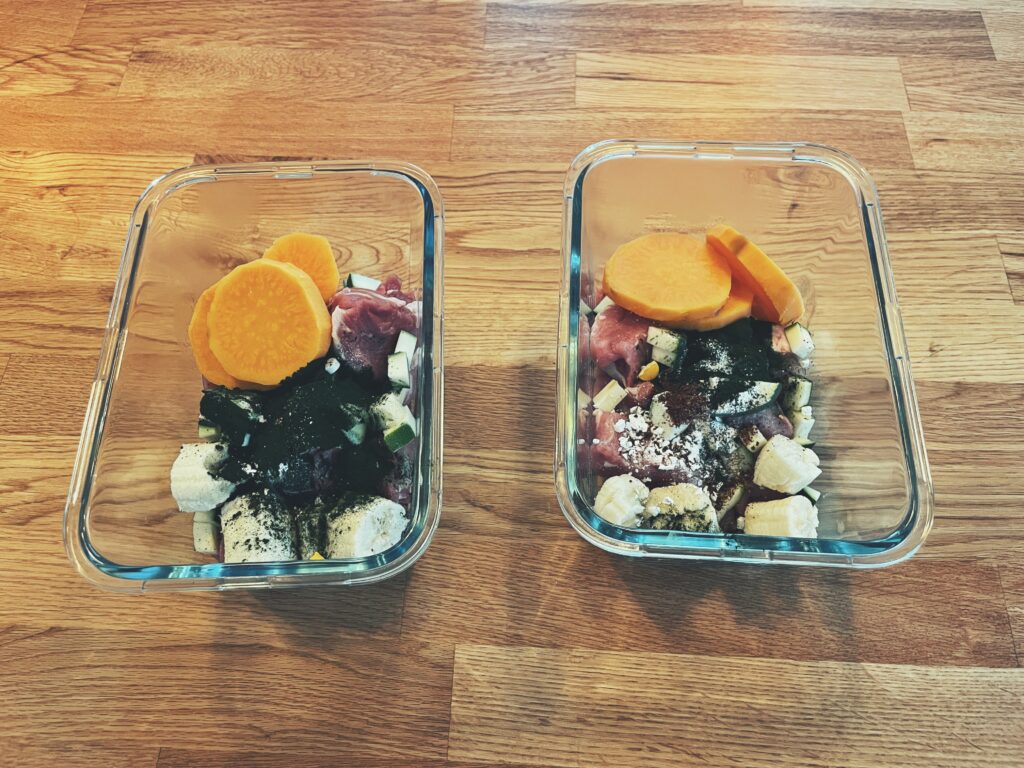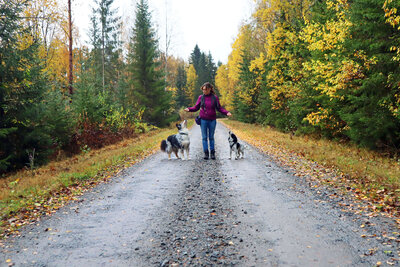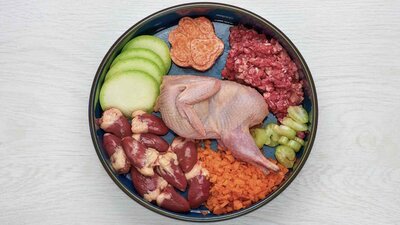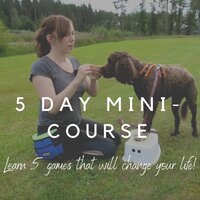Let’s talk about dogs who feel sick and maybe throw up bile in the evenings or after meals. This is SO common and something I’ve also experienced.
Bruce has periods of feeling sick after every meal. I feel so hopeless when he feels like this. He just walks around drooling, licking his lips and wants to eat so much grass, but it never helps. It goes away after an hour or so, but it’s very sad to see him like this.
Stella also used to feel sick in the evenings and often woke us up by throwing up bile. The only cure was to get her to eat something, but you had to add some tasty cheese on top for her to touch her food. As soon as she ate, the nausea disappeared.
Do you recognise this in your dog? If so, read on because I have some tips and suggestions for you.
Firstly, I want to make clear that I am no veterinarian so all the information below are from a highly reputable holistic vet, Dr. Karen Becker. Her tips have really helped me, so I hope they will help you too.
What happens?
Now let’s explain what happens in your dog’s body.


The stomach has a little door, a sphincter, that is meant to shut all the acid in the stomach when food is in there. If it doesn’t shut properly, acid leaks out from the stomach, it gets irritated and painful and your dog might feel nauseous. One of the main reasons that this happens is that your dog doesn’t have enough acid in their stomach. If there’s not enough acid, the doors won’t shut. This is the reason for most GERD and acid reflux issues, but the cause can also be found further down the intestines.
The symptoms can vary a lot.
- Retching, regurgitation or vomiting (with or without food/bile)
- Bad breath
- Lip licking
- Licking surfaces
- Licking carpets
- Drooling
- Swallowing
- Eating grass
- Dry coughing when lying down (can also be linked to the heart)
- Bubbly belly
- Old age (older dogs stop producing acid)


The causes
First off, you need to investigate your dog’s food.
High carbs
Highly processed diets, which most dry food, are a huge cause of GERD. Starch content alone, which most dry foods have between 20-60% of, is causing huge inflammation in the gut. This is the number 1 for GERD in humans and dogs.
So number one is to look at your dog’s diet, and my big recommendation is to move to a fresh diet or lightly cooked diet, or to find food with fewer carbs.
Zinc Deficiency
Another cause could be zinc deficiency. Again, looking over your dog’s diet to make sure it has enough zinc in it. This is especially important if you DIY your dog food because you need to follow a recipe that is complete and balanced in order for your dog to get everything they need from their food. If you DIY and do not use a recipe, this could be the reason.
So number 1, check your dog’s food and make adjustments as much as you can. For example, just 20% of your dog’s diet being raw och lightly cooked has shown a massive difference in gut health, so even a little change makes a huge difference.
Fibres
Dog who eat little or no fibres can produce too much acid in their stomach, which also can lead to problems. So, make sure your dog is eating around 10% vegetables every day. These will have to be lightly cooked or puréed
Want help on all of this? Check out Dr Karen Becker and Rodney Habib’s new book: The Forever Dog Life, which is jam packed with balanced recipes and tips.
Other issues
- Pancreas enzyme deficiency
- Gallbladder dysfunction
- Lower esophageal sphincter spasm
But before you run to the vet, let’s start with some easy at-home remedies to see if they help your dog first.
What to do?
These solutions are all suggested by Dr Karen Becker, and they are recommended to be done in this order.


Look over your dog’s diet.
This is what helped my dog Stella. Remember, she used to throw up bile late at night. But as soon as we switched to raw, this disappeared, and it never happened again. So your dog’s diet is a huge part of this puzzle
Add apple cider vinegar
Most dogs with these issues have low acid in their stomach, so adding something acidic like apple cider vinegar will fill up those acid levels. This is even used as a simple test to see if your dog has too little or too much acid. Just feed your dog’s ACV for a few days to see if the symptoms disappear. If they do, your dog had too little acid. 1 tsp /20 lbs or 1tsp / 10 kg
Digestive enzymes
This is what helps Bruce the most when he has his periods of nausea. I LOVE digestive enzymes and they work immediately. For Bruce, they do also keep his nausea in check long after we run out, so we normally only have to give this a few times per year.
My favourite brand is Terranova Digestive Enzymes with Microflora because it has both probiotics and enzymes. But you can of course find many others out there.
Betaine hydrochloride with meals
Betaine hydrochloride is a dietary supplement with hydrochloric acid and usually pepsin, which is an enzyme that breaks down protein in food. Suitable for those who have problems with digestion and who have too little stomach acid. 1mg/10lbs or 1mg /5kg. Your dog needs to take this WITH meals.
When Bruce was at his worst with his nausea, which didn’t get solved with raw food, this supplement was key for him to feel good after food. But try AVC first because that might be the easiest
Talk to your vet
If none of these solutions above works or if it keeps coming back, you need to talk to your vet because the issue might be more complex than low stomach acid.
Stress makes it worse!
Stress will make ALL gut symptoms worse, so it’s very important to keep your dog calm. This, incidentally, is also the key to see progress in training your reactive dog and for your dog to feel happy every day. I have a FREE lesson with my top 3 tips on how to calm your reactive dog here.


Summary
To summarise, we have talked about what happens in your dog’s body when your dog throws up bile or feel sick after food. The acid in the stomach is usually too low and that stops the “doors” from closing and acid leaks out, causing irritation and nausea that can lead to bile coming up.
The main solutions are, a raw or lightly cooked diet, apple cider vinegar, digestive enzymes and/or Betaine hydrochloride.
I hope you have a little more understanding of this common issue and if you want to learn more I couldn’t recommend this video enough. It’s by Dr. Karen Becker and can be accessed as a part of her membership on Facebook, “The inside scoop”. This group is AMAZING for anyone who wants to know more about raw food and longevity in dogs.















+ show Comments
- Hide Comments
add a comment